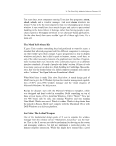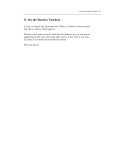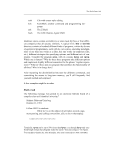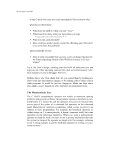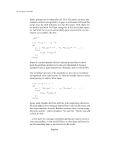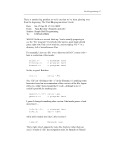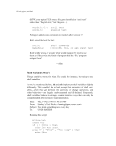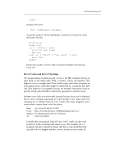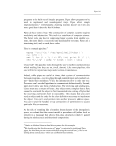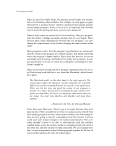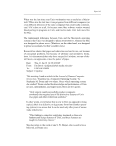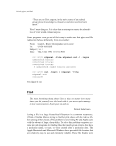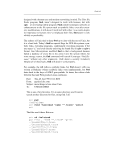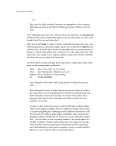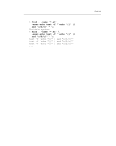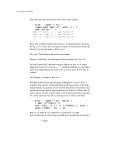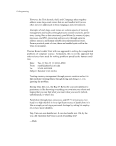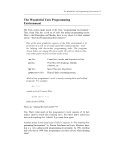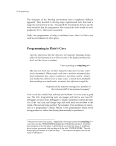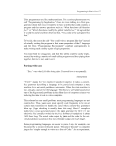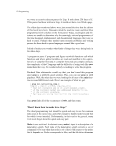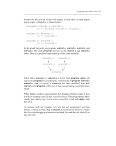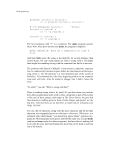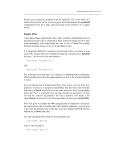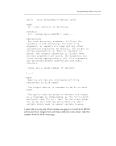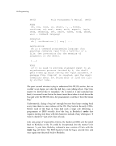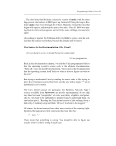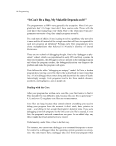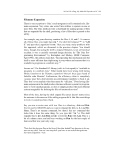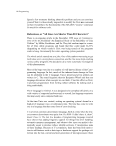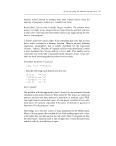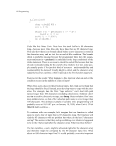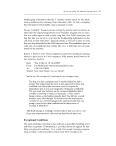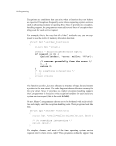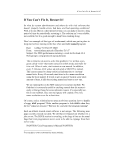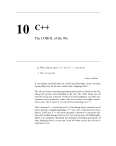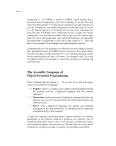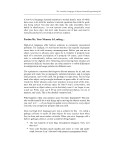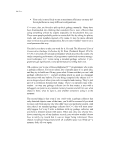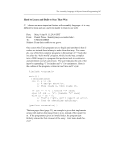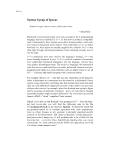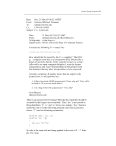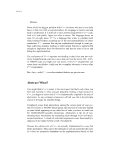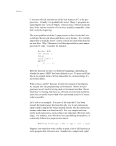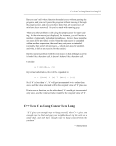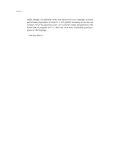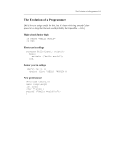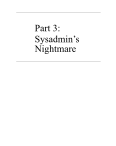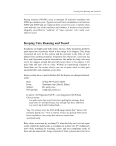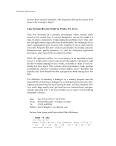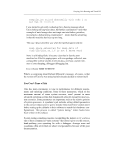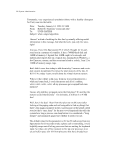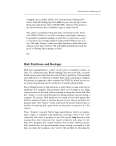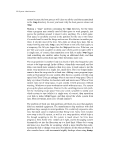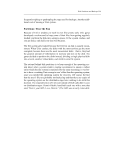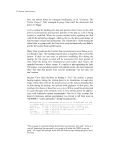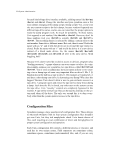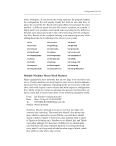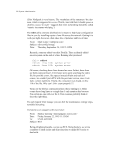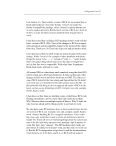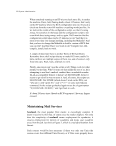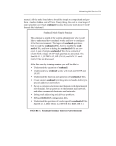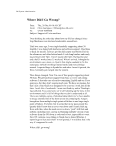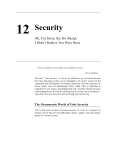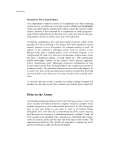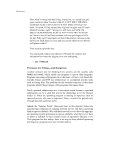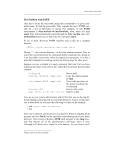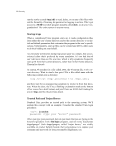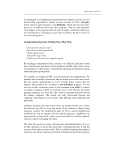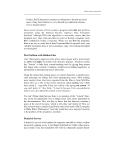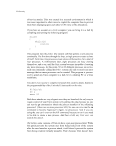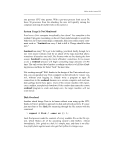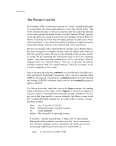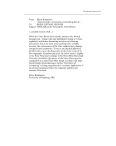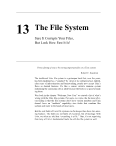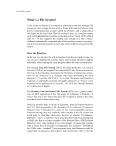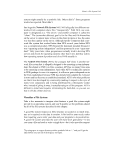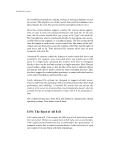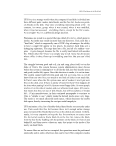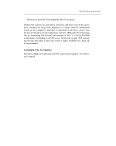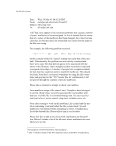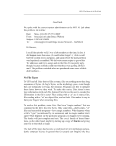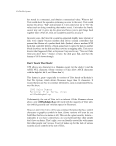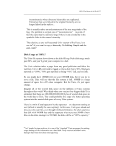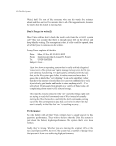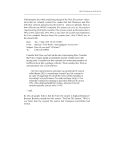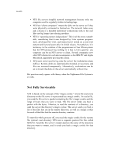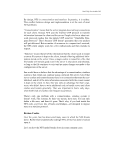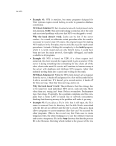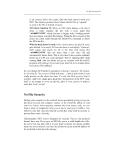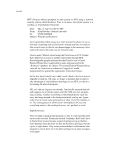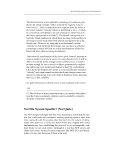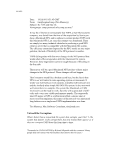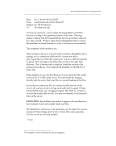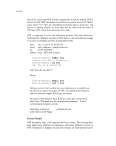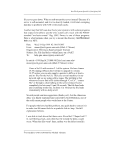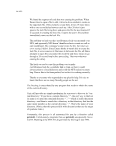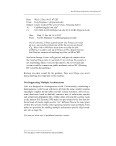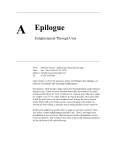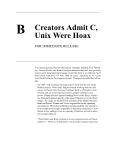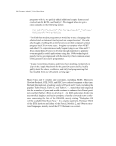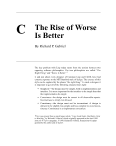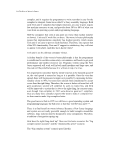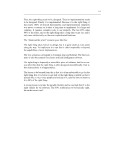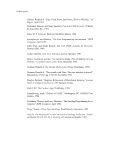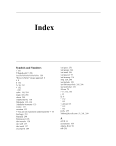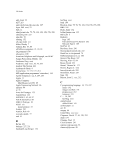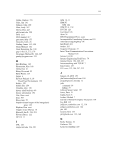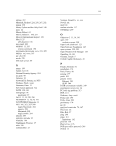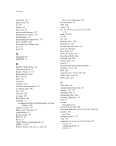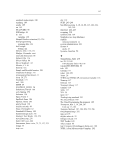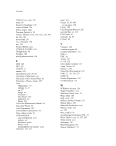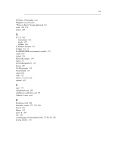4 Unix • Portability A single virus can invade many different types of cells, and with a few changes, even more. Animal and primate viruses often mutate to attack humans. Evidence indicates that the AIDS virus may have started as a simian virus. • Ability to Commandeer Resources of the Host If the host didn’t provide the virus with safe haven and energy for replication, the virus would die. • Rapid Mutation Viruses mutate frequently into many different forms. These forms share common structure, but differ just enough to confuse the host's defense mechanisms. Unix possesses all the hallmarks of a highly successful virus. In its original incarnation, it was very small and had few features. Minimality of design was paramount. Because it lacked features that would make it a real operat- ing system (such as memory mapped files, high-speed input/output, a robust file system, record, file, and device locking, rational interprocess communication, et cetera, ad nauseam), it was portable. A more functional operating system would have been less portable. Unix feeds off the energy of its host without a system administrator baby-sitting Unix, it regularly panics, dumps core, and halts. Unix frequently mutates: kludges and fixes to make one version behave won't work on another version. If Andromeda Strain had been software, it would have been Unix. Unix is a computer virus with a user interface. History of the Plague The roots of the Unix plague go back to the 1960s, when American Telephone and Telegraph, General Electric, and the Massachusetts Institute of Technology embarked on a project to develop a new kind of computer system called an “information utility.” Heavily funded by the Department of Defense’s Advanced Research Projects Agency (then known as ARPA), the idea was to develop a single computer system that would be as reliable as an electrical power plant: providing nonstop computational resources to hundreds or thousands of people. The information utility would be equipped with redundant central processor units, memory banks, and input/ output processors, so that one could be serviced while others remained running. The system was designed to have the highest level of computer
History of the Plague 5 security, so that the actions of one user could not affect another. Its goal was even there in its name: Multics, short for MULTiplexed Information and Computer System. Multics was designed to store and retrieve large data sets, to be used by many different people at once, and to help them communicate. It likewise protected its users from external attack as well. It was built like a tank. Using Multics felt like driving one. The Multics project eventually achieved all of its goals. But in 1969, the project was behind schedule and AT&T got cold feet: it pulled the plug on its participation, leaving three of its researchers—Ken Thompson, Dennis Ritchie, and Joseph Ossanna—with some unexpected time on their hands. After the programmers tried unsuccessfully to get management to purchase a DEC System 10 (a powerful timesharing computer with a sophisticated, interactive operating system), Thompson and his friends retired to writing (and playing) a game called Space Travel on a PDP-7 computer that was sitting unused in a corner of their laboratory. At first, Thompson used Bell Labs’ GE645 to cross-compile the Space Travel program for the PDP-7. But soon—rationalizing that it would be faster to write an operating system for the PDP-7 than developing Space War on the comfortable environment of the GE645—Thompson had writ- ten an assembler, file system, and minimal kernel for the PDP-7. All to play Space Travel. Thus Unix was brewed. Like scientists working on germ warfare weapons (another ARPA-funded project from the same time period), the early Unix researchers didn’t real- ize the full implications of their actions. But unlike the germ warfare exper- imenters, Thompson and Ritchie had no protection. Indeed, rather than practice containment, they saw their role as an evangelizers. Thompson and company innocently wrote a few pages they called documentation, and then they actually started sending it out. At first, the Unix infection was restricted to a few select groups inside Bell Labs. As it happened, the Lab’s patent office needed a system for text pro- cessing. They bought a PDP-11/20 (by then Unix had mutated and spread to a second host) and became the first willing victims of the strain. By 1973, Unix had spread to 25 different systems within the research lab, and AT&T was forced to create the Unix Systems Group for internal support. Researchers at Columbia University learned of Unix and contacted Ritchie for a copy. Before anybody realized what was happening, Unix had escaped.




































































































































































